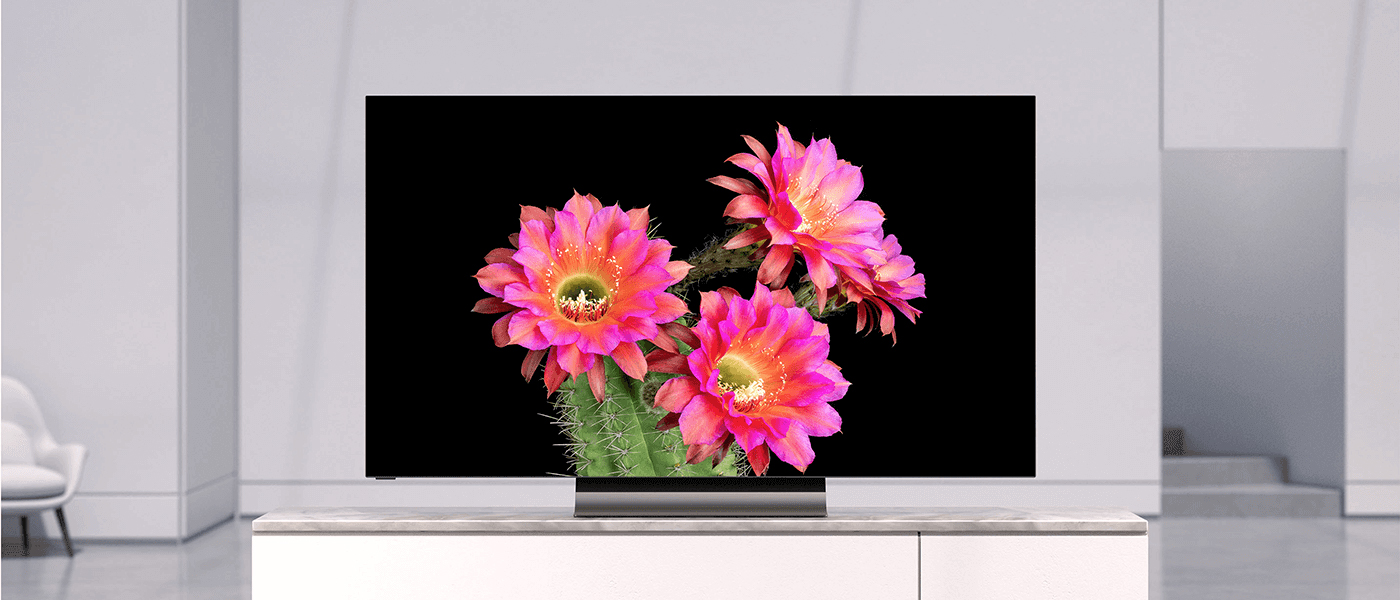Tom's Guide Verdict
Vizio makes a huge splash in the OLED TV market with the the Vizio OLED TV (OLED55-H1), a 4K powerhouse that punches far above its price.
Pros
- +
Ultralow price for an OLED
- +
Generally strong picture and audio quality
- +
Outstanding viewing angles
- +
SmartCast provides numerous, well-considered smart features and free video content
- +
Sleek screen aesthetic
Cons
- -
Minor issues with brightness and color accuracy
- -
Gaming performance could be better
- -
Cumbersome stand
Why you can trust Tom's Guide
Price: $1,299.99
Model Number: OLED55-H1
Screen Size: 55 inches
Resolution: 3,840 x 2,160
HDR: HDR10+, HLG, and Dolby Vision
Refresh Rate: 120Hz
Ports: 4 HDMI, 1 USB
Audio: 30-watt speakers
Smart TV Software: Vizio SmartCast
Size: 48.3 x 30.6 x 2.2 inches [w/o stand]
Weight: 44.9 pounds [w/o stand]
Vizio’s reputation for producing top-notch TVs at surprisingly low prices is not dimmed by its belated entrance into the OLED space. If anything, it’s supercharged. The company’s new Vizio OLED TV (OLED55-H1) is an OLED-technology 4K set loaded with abundant smart features and, for its price—hundreds of dollars lower than you’ll see from competitors LG and Sony—delivering a delicious viewing experience that matches some of the best TVs out there, not to mention the best Vizio TV right now.
The OLED55-H1 may be one of the best OLED TVs based on price alone – enough that it won a 2021 Tom's Guide Award for the best TV value – but it is not flawless. The images aren’t as perfectly pristine as you’ll find from a pricier panel, its gaming capabilities just miss the mark, and a design flub can make dealing with initial setup a pain if you’re not planning on hanging the set on the wall. But our Vizio OLED TV review shows that those are small prices to pay when the actual price you pay is so small—and the list of what you get for that money is so long.
Editor's Note: Since this review was written, Vizio TVs have been updated with support for HBO Max. However, our initial recommendations from the original review remain unchanged from when it first ran in December of 2020.
Vizio OLED TV review: Price and availability
For our review, we assessed the 55-inch version of the Vizio H1 OLED, the OLED55-H1. Because the 65-inch model (the OLED65-H1) shares all of the same core features and underlying technologies, we expect the performance of both versions to be comparable, and our recommendations for the OLED55-H1 may also apply to the larger set.
It's also worth noting that the Vizio OLED TV has seen some steep discounts during major sales events. While the regular price of the 55-inch model puts it just a tad too high to be on our list of the best TVs under $1000, it's not uncommon for the set to sell for less than a grand during big sales, so keep an eye out if you want an OLED at a real bargain.
As we head into the end of the year, we expect to see significant discounts to both sizes of the Vizio OLED, so keep an eye on the best Black Friday TV deals to know when you can save big.
Vizio OLED TV review: Design
In several key ways, thin is the name of the game with the Vizio OLED55-H1. Yes, the screen itself is markedly slender (just under three-eighths of an inch), as is typical from an OLED TV. And the dark metal bezel surrounding that screen is so thin (less than one-eighth of an inch) that it all but disappears into the jet-black display when the set is off.
Get instant access to breaking news, the hottest reviews, great deals and helpful tips.
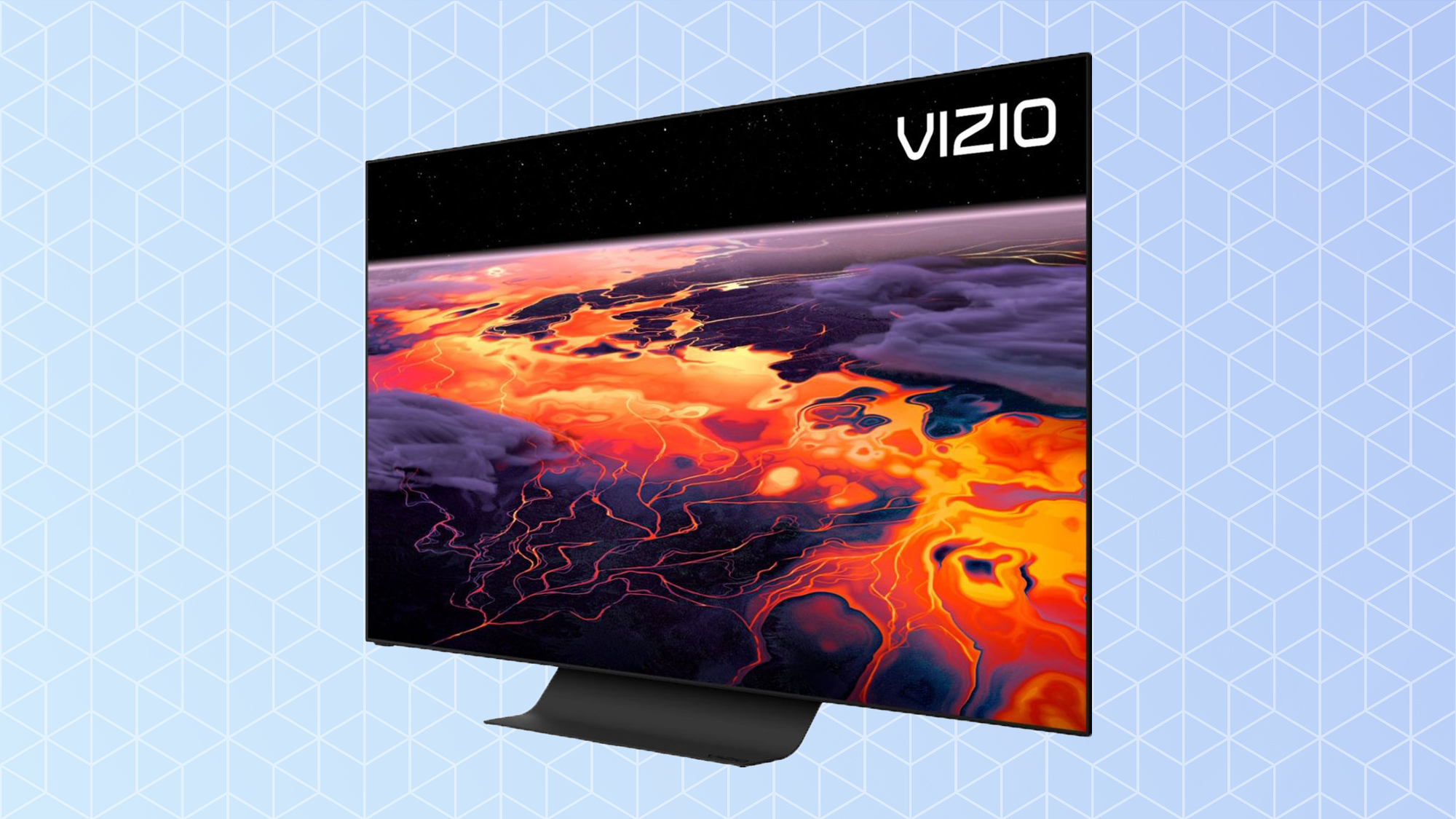
The back isn’t quite as svelte. Though the bare screen is still visible on the top and sides, the large plastic enclosure housing the TV’s components consumes the bottom two-thirds and juts out nearly two inches.
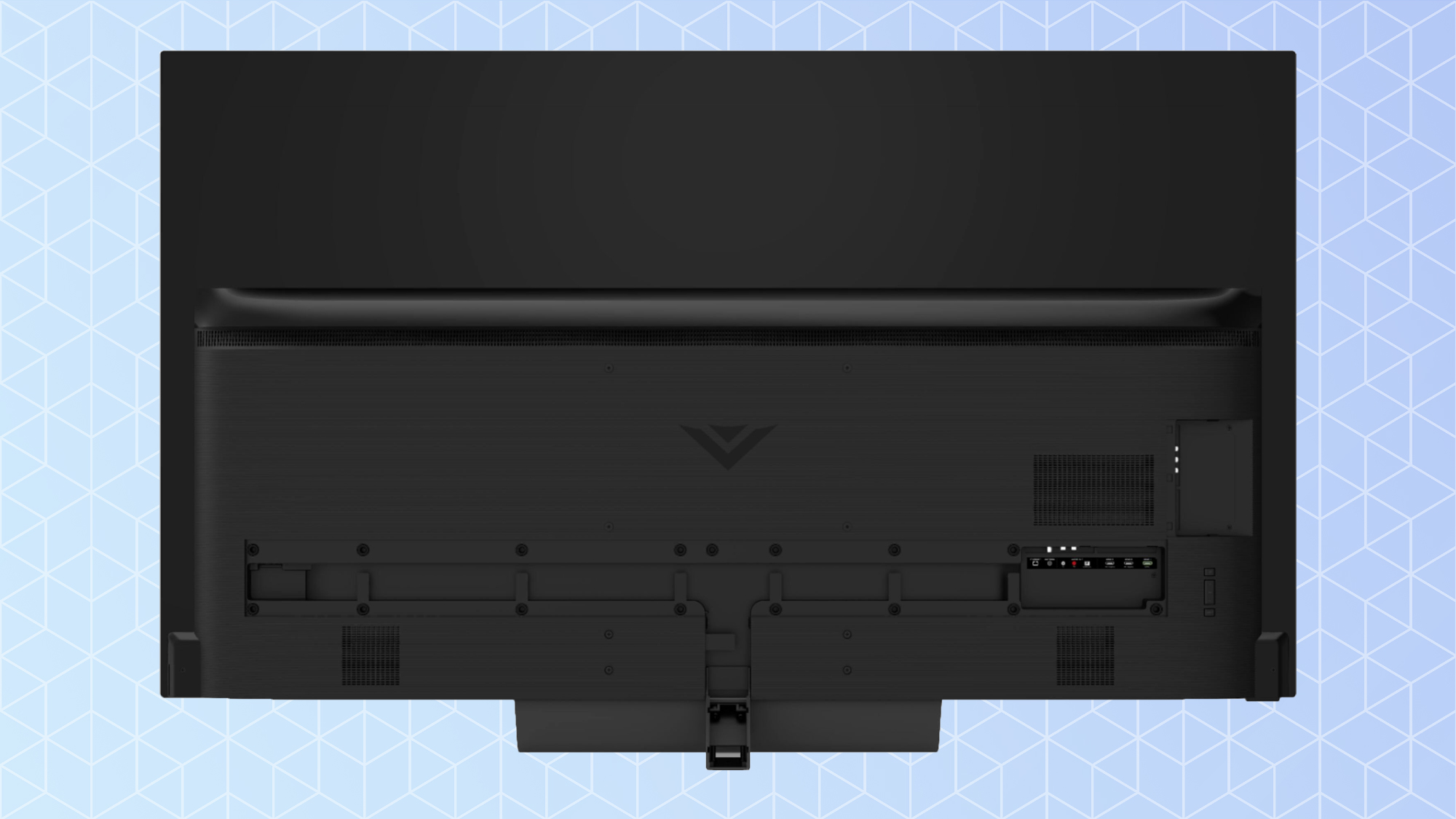
Aside from some raised horizontal lines and four screw holes for securing a 300mm x 200mm VESA wall mount, a Vizio logo is the only ornamentation visible on the enclosure. Two cover panels may be removed to reveal the ports (see below) and channels for cable routing.
There’s one thing not to like about the design: the stand. Measuring more than 21 inches in length and extending out more than 4 inches in front of and behind the OLED55-H1 when attached, it’s a surprisingly bulky three-piece unit intended to cradle a soundbar. Even if you approve of its attention-grabbing shape (which I, for the record, do not), it won’t exactly seamlessly blend into most entertainment centers and doesn’t comfortably support the set’s otherwise slim profile. As it’s also a bit tricky to install, using it might lead to some first-time frustration Vizio could have obviated with a simpler design.
Vizio OLED TV review: Ports
With the exception of the power connector, which is located on the left, all of the OLED55-H1’s ports are on the right side of the rear panel. In the first and largest port bay are jacks for Ethernet, antenna, audio out (including optical), and three HDMI ports.
Though the labels for these all face outward, you plug in cables up into the plastic enclosure, which can be hard to get right especially if you have limited light and room to move. (The combination of the thin screen and the heavy stand makes moving the TV too much a dicey proposition, so you’ll want to leave it in one place as much as possible.) A fourth HDMI port, composite video outputs, and a USB 2.0 port are considerably more accessible on the edge of the panel.
Vizio OLED TV review: Performance
Almost regardless of picture mode, image quality on the OLED55-H1 looks excellent. Although there are noticeable differences, for example, between the Bright, Calibrated, and Calibrated Dark modes in the Pasaana festival in Star Wars: The Rise of Skywalker, each is valid and highly attractive, rendering the scene’s juxtaposition of Technicolor-vivid costumes and craggly aliens against the planet’s oppressive desert backdrop in a unique but satisfying way. Onward, the palette-bursting Disney-Pixar fantasy-themed animated film from earlier this year, Marvel’s fast-moving action romp Spider-Man: Far From Home, and the comic-book-animated compromise candidate between them, Spider-Man: Into the Spider-Verse, fare just as well in these areas.
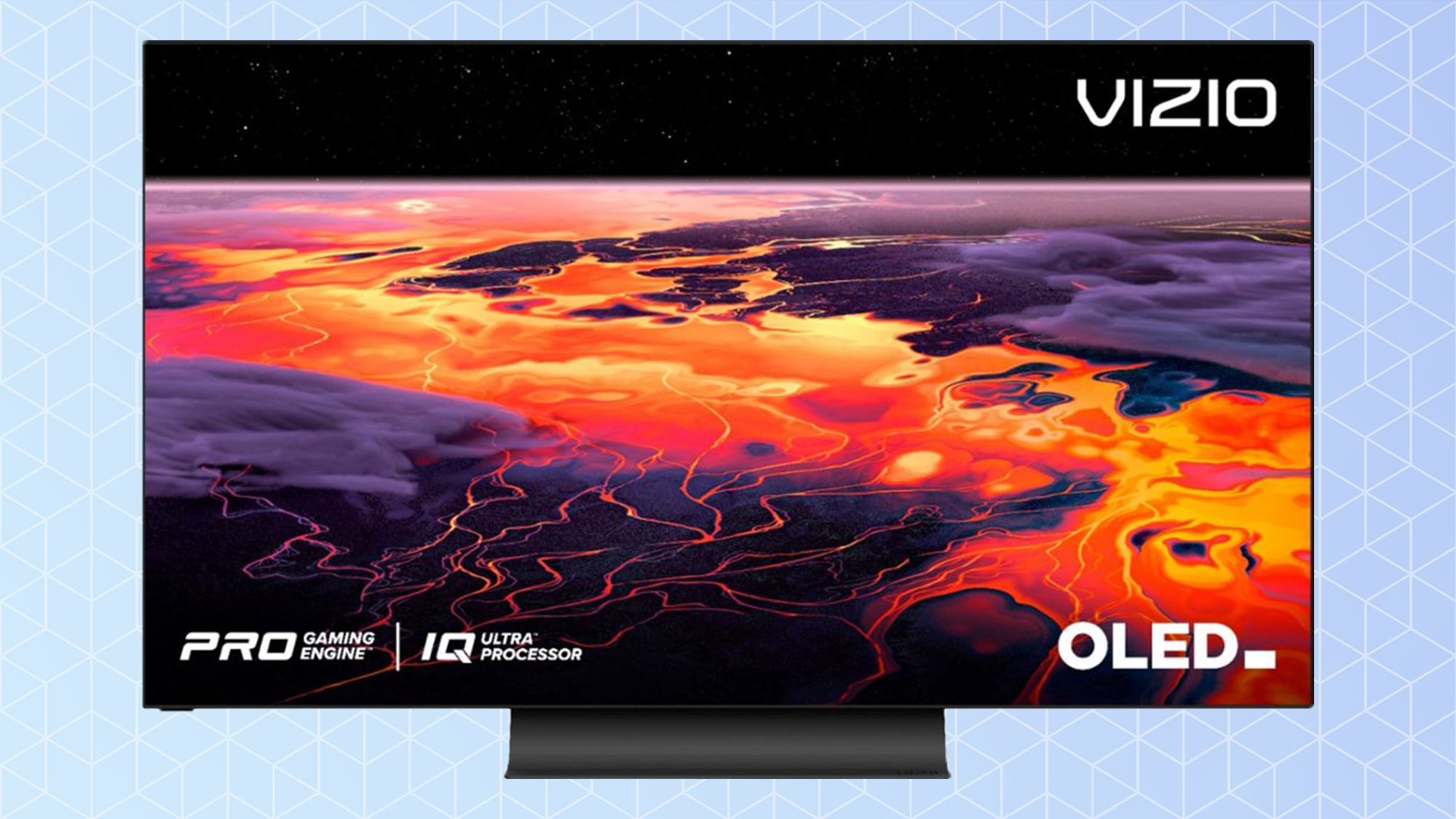
OLED technology gives TVs functionally infinite contrast levels, for the purest blacks you’ll find anywhere. On that score, the Vizio OLED55-H1 does not disappoint, and renders detailed spacescapes and even the Netflix splash screen with impressive fidelity. To get this dazzling effect, however, you have to sacrifice some brightness compared with non-OLED TVs. It was particularly evident up against the TCL 6-Series Roku TV (R635), which boosts both that and color via QLED technology, and we saw it in both SDR and HDR mode. This should never be a deal-breaker with an OLED set, but it’s worth keeping in mind.
The aggressive contrast you see with OLED greatly elevates scenes where the relationship between light and dark is crucial, such as the major battles and Rey and Palpatine’s final confrontation in The Rise of Skywalker. And it brings a realistic edge to the cartoony provenance of Spider-Man: Into the Spider-Verse and the Lego Star Wars Holiday Special.
You’ll appreciate the picture’s clarity, too, no matter where you’re sitting. Even when you’re viewing from extreme off angles, only the slightest distortion of color (and hardly a distracting one) gives away that you’re not viewing the set from straight on. The grayish cast that can so often be visible on TVs when you’re in the wrong position is nowhere to be found here.
The OLED55-H1 supports three different HDR formats: Dolby Vision, HDR10+, and HLG. One of these will activate automatically when you play content that supports it, and each of the picture modes has a special HDR version that will also engage—you can’t turn HDR or support on or off in any other way. Because the HDR-enhanced modes retained the same basic qualities as the originals, the picture in each was just as good with that function on as with it off.
Flaws in image quality are minor and, for this price, thoroughly forgivable. The most significant is color. In Calibrated and Calibrated Dark modes, the OLED55-H1’s Delta-E rating, which relates the difference between colors input and displayed, registered as about 4.3. This is substantially worse than we saw from either LG (2.9 for the LG BX OLED (2.9) and 2.0 for the LG CX OLED), the Sony Bravia A8H OLED (1.5), or the TCL (2.2). Similarly, the OLED55-H1 covers only 97.8% and 98.9% of the Rec. 709 color space in the same modes; all of our comparison TVs managed upwards of 99%. (All of our performance tests are conducted using an X-Rite i1 Pro 2 spectrophotometer, AccuPel 5000-DVG and SpectraCal VideoForge Pro pattern generators, and Portrait Displays’ Calman Ultimate calibration software.)
In addition, when upscaled from 1080p, Mission: Impossible—Fallout became a little muddy and soft around the edges. And applying our 4K test pattern revealed a touch of overscan, with isolated portions of the bezel-hugging circles not completely visible on the screen.
Vizio touts its ProGaming Engine as a way to better game on consoles, and the OLED55-H1’s 120Hz maximum refresh rate should aid with that. Our evaluation of the TV in Game Mode with a Leo Bodnar Lag Tester showed an input lag of 21 milliseconds, just barely above the 20-millisecond threshold we prefer in the best gaming TVs, and more than you’ll see from the Sony Bravia A8H OLED (18ms), or the LG BX OLED (14.5ms) or LG CX OLED (13.1ms). Even so, in most situations, your gameplay probably won’t be affected that much.
Vizio OLED TV review: Audio
Hardcore audiophiles will undoubtedly want to add a soundbar to the OLED55-H1 to maximize their listening enjoyment with the set. But no one else will need to bother—the TV sounds quite good. Besides its fine trebles and mids, its bass presence is notably above average; it falls short of collapsing your chest in The Knife’s bass-heavy track “Silent Shout,” but it’s solid and consistent, even at lower volumes, and adds reasonable oomph to music and movies alike.
Although minute distortion is detectable upwards of 90% of the TV’s volume range, the set’s output is clear and powerful at lower levels. In our testing, we had no trouble filling a living room with movie and music sound at volume 35 and below—the walls weren’t shaking, but if you don’t demand that, the OLED55-H1’s sound will not disappoint you.
(And if you are one of those hardcore audiophiles who won’t accept the walls not rattling, check out our roundup of the best soundbars.)
Vizio OLED TV review: Smart TV features
Vizio’s SmartCast platform has improved tremendously since its launch, and it offers myriad options for accessing a wide range of content. A dynamic, constantly moving carousel near the top of the page and a static line below it surface plenty of movies, TV shows, music videos, news, and other things you might not find on your own if you’re drowning in providers. Below that is a customizable row of apps for major services including Netflix, Amazon Prime Video, Hulu, Apple TV, Disney+, YouTube, Vudu, HBO Max and more. Farther down are a series of free channels and personalized recommendations. A navigation bar provides a handy place to fire up movies, series, free content, and tutorials and market-oriented, Vizio-specific productions.

In case that’s still not enough, the set makes it easy to stream video from other devices via Google Cast (for Android and Chrome) and AirPlay 2 (for iOS and macOS). This is especially handy if you want to catch something on a service that Vizio does not support natively via its integrated apps.
You have still more options. You can pair the TV with a product supporting Amazon Alexa or Google Home to enable voice controls. And if your phone uses iOS rather than Android, Apple HomeKit makes it possible for you to control your smart home devices with Siri.
Vizio OLED TV review: Remote control
With the OLED55-H1’s numerous smart features, the remote can be dedicated to just the basics you need for everyday operation. Measuring about 6.8x1.8 inches, and with a gently rounded back that makes it comfortable to hold for longer periods, it has a clean design that puts just the right number of basic controls at your (literal) fingertips. The Home button is dead center, with the round navigational pad and Menu, Info, Back, CC, and Volume and Channel buttons all within close proximity. Dedicated buttons at the top of the remote instantly open Vudu, Netflix, Amazon Prime Video, Xumo, Hulu, and Redbox.
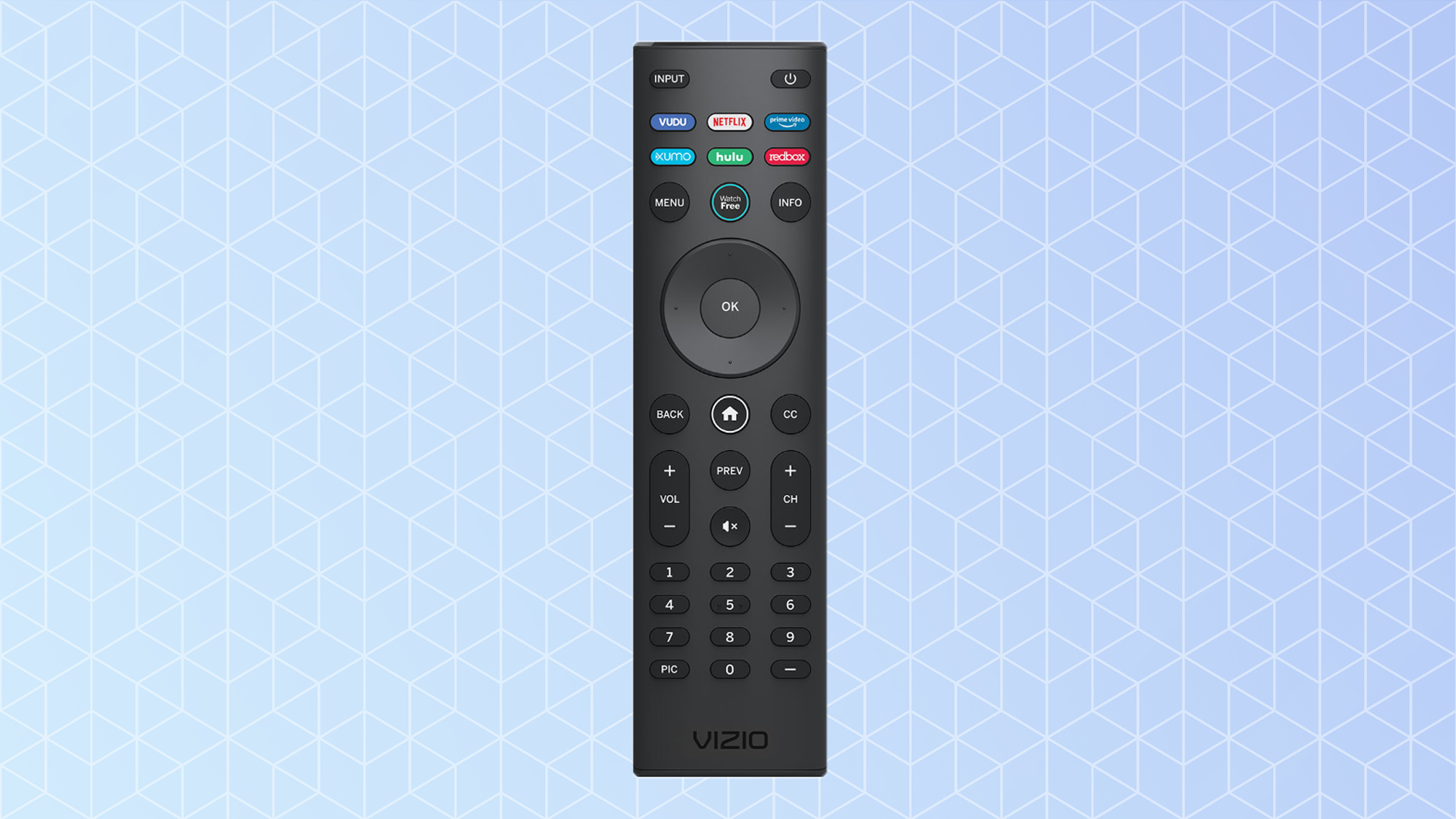
If you don’t care for the remote, or if you just want to consolidate your devices, you can download the Vizio SmartCast Mobile app and turn your phone into a remote capable of completely controlling the OLED55-H1 and other Vizio products. Though I like the physical remote, SmartCast Mobile provides an excellent alternative with every bit as much functionality (and maybe a little more convenience).
Vizio OLED TV review: Verdict
With the Vizio OLED TV (OLED55-H1), Vizio has smashed open the lower end of the OLED market, and if I were LG or Sony, I’d be worried right now. This set may not quite match their lower-priced models in terms of picture quality or depth of features, but the entry-level LG BX OLED and more premium LG CX OLED are priced at $1,599 and $1,799 respectively, and the Sony Bravia A8H OLED rings in at $1,899. Paying just $1,299 for all you get with the OLED55-H1 is a no-brainer, and the microscopic sacrifices you have to make to get that price are a cinch to justify.
Sure, for sheer value, you still can’t beat the TCL 6-Series Roku TV (R635), which boasts amazing visuals and costs almost half as much—but it’s not an OLED. Vizio’s TV is as impressive in its class as the 6-Series is in its own, and one of the best 4K TVs around. If you’ve been slavering over the pictures you see on OLED panels, but have been put off by the prices, the Vizio OLED TV (OLED55-H1) is the TV you’ve been waiting for.
Matthew Murray is the head of testing for Future, coordinating and conducting product testing at Tom’s Guide and other Future publications. He has previously covered technology and performance arts for multiple publications, edited numerous books, and worked as a theatre critic for more than 16 years.
